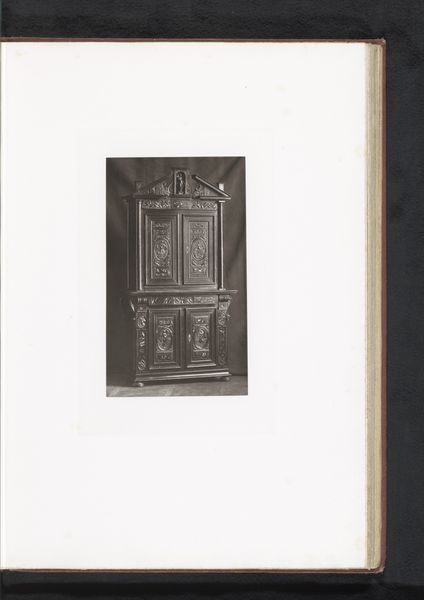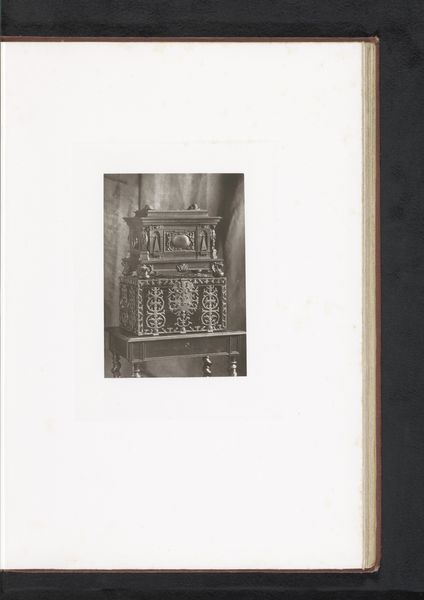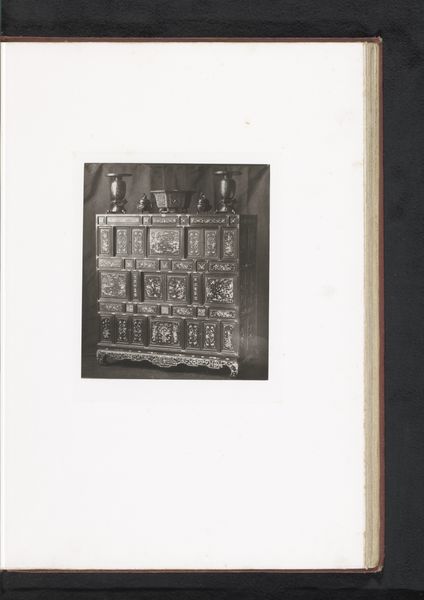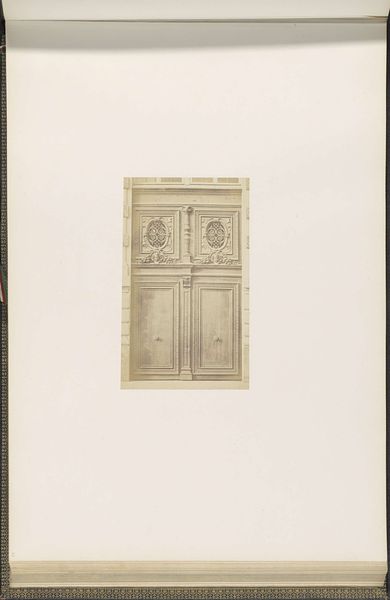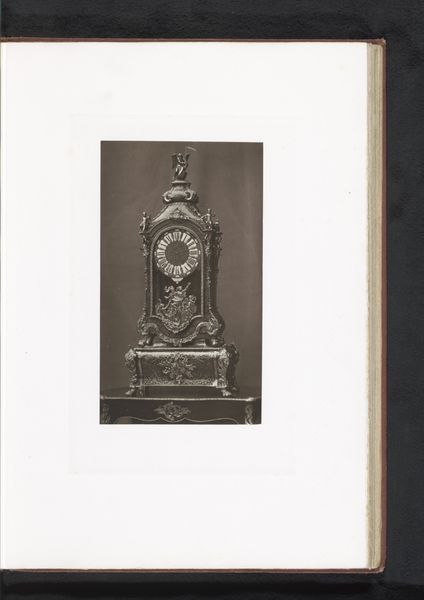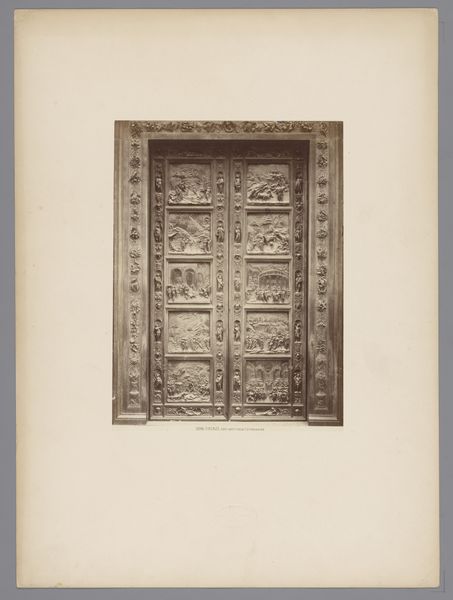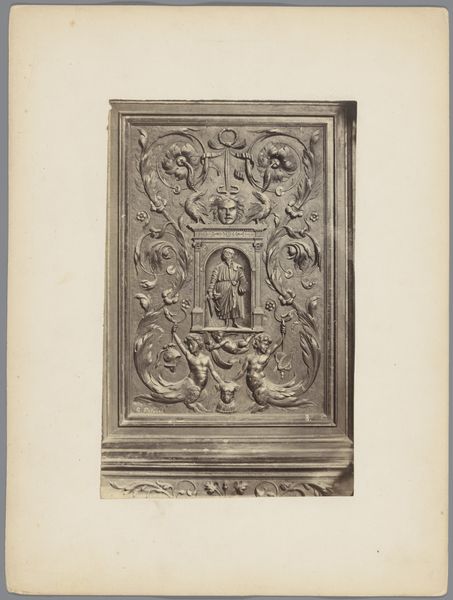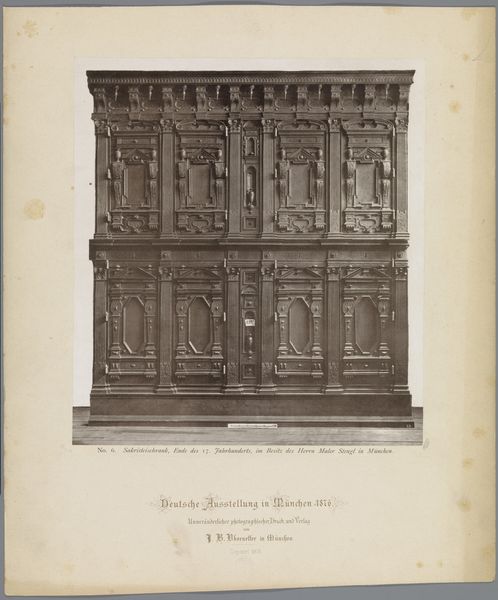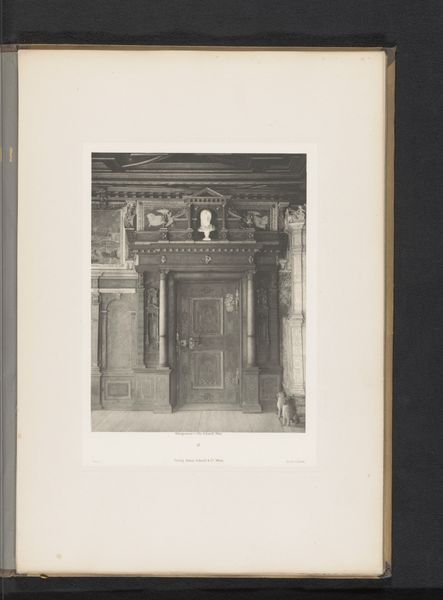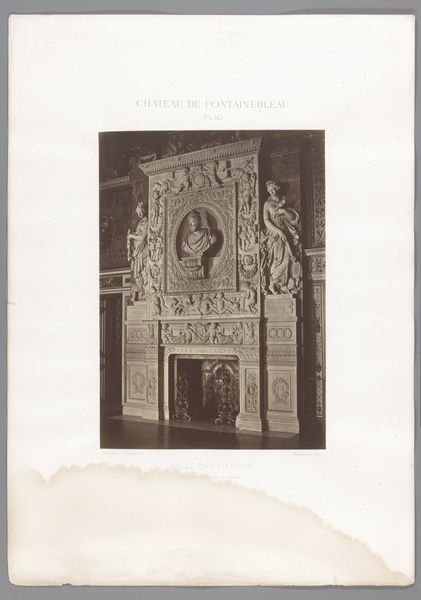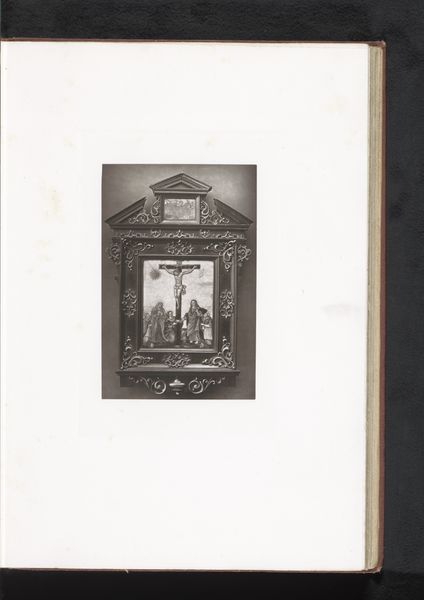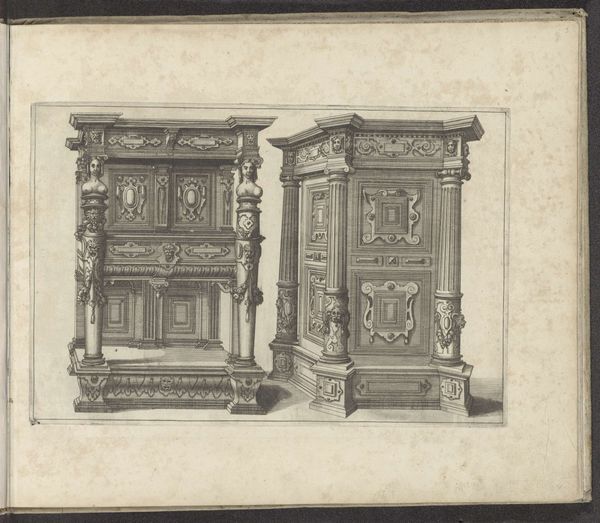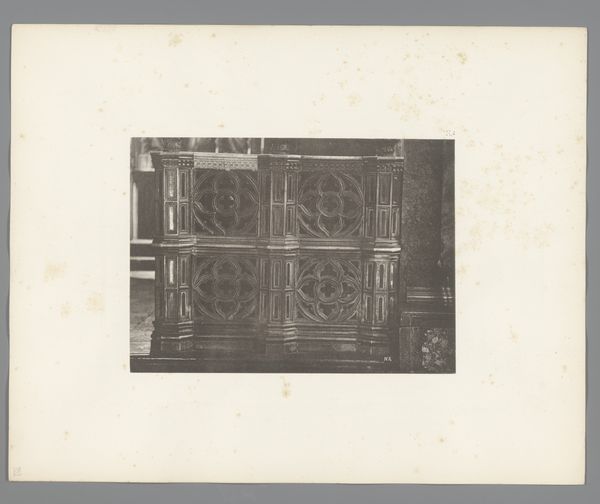
Kast in de stijl van Hendrik III van Frankrijk, opgesteld tijdens de Exposition Rétrospective van 1873 in Tours, Frankrijk 1873
0:00
0:00
carving, photography, wood
#
portrait
#
carving
#
furniture
#
photography
#
wood
Dimensions: height 184 mm, width 123 mm
Copyright: Rijks Museum: Open Domain
Curator: Well, let's begin by looking at this photograph from 1873. The description identifies it as "Kast in de stijl van Hendrik III van Frankrijk, opgesteld tijdens de Exposition Rétrospective van 1873 in Tours, Frankrijk" a mouthful, but the point is that it's documenting a French chest in the style of Henry III, exhibited that year in Tours. Editor: It’s quite imposing, isn't it? Even in this image, the deep carving creates a powerful, weighty presence. You can feel the craftsmanship. Curator: Absolutely. These revival styles were quite popular at the time, particularly those looking back at earlier periods of perceived national glory. The cabinet references a style from centuries past. The choice to display and document it reflects how societies actively rewrite and re-contextualize history through objects. Editor: What intrigues me most is the inherent performativity of the piece itself and this photograph: the object on display within an exhibition designed to showcase French artisanship and style. This chest isn't just an object, but a statement about cultural legacy and power structures embedded within. The choice of style—evoking a past King, Henry III—also adds layers of complexity, specifically those about idealized masculinity and control. Curator: Right. It raises interesting questions about the accessibility of the original object versus this photograph. Who could have owned a cabinet like that, and who gets to view this version of it in photographic form? Who are these displays aimed toward? It begs the questions: what stories are being prioritized and perpetuated through images like these, and how does that affect who gets to imagine themselves within it? Editor: It feels very much about reclaiming an aesthetic—asserting a certain identity—and of course the power and exclusivity that always accompanies that sort of statement. You can almost read the chest as a representation of the social hierarchies of its time. Curator: Precisely. Even now, encountering a photographic depiction rather than the original adds another remove—layering accessibility with distance, really revealing how we construct historical narratives through visual cues and institutional framing. I am really glad we took a close look at that one today. Editor: Me too. A valuable reminder that material objects can be read in conversation with broader themes about cultural and gendered expectations.
Comments
No comments
Be the first to comment and join the conversation on the ultimate creative platform.
